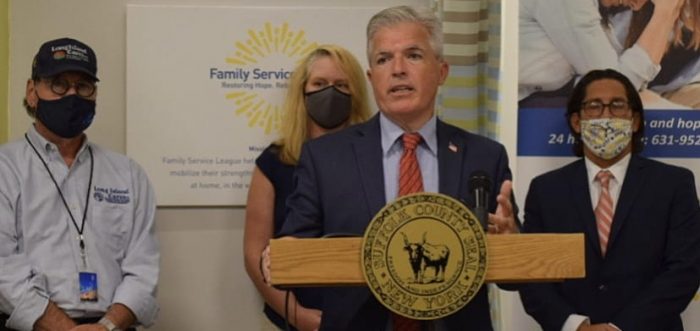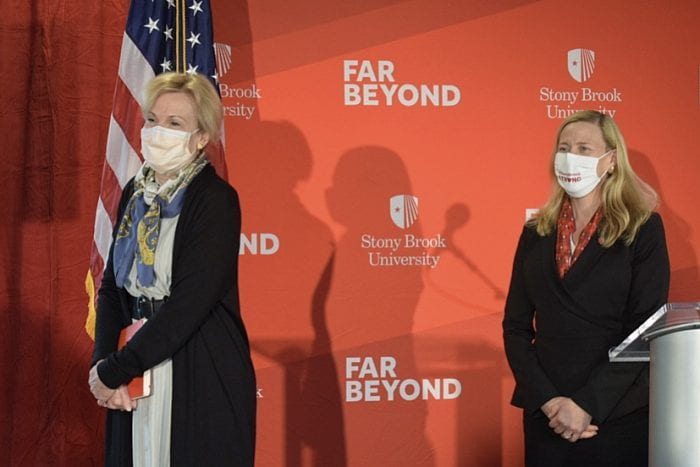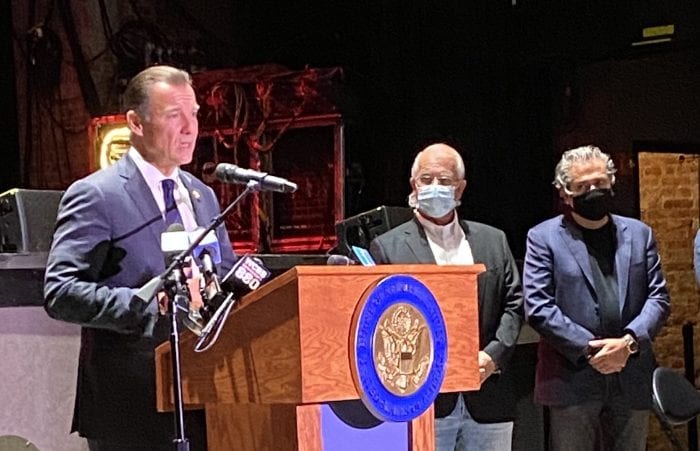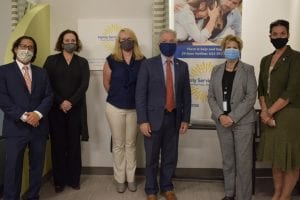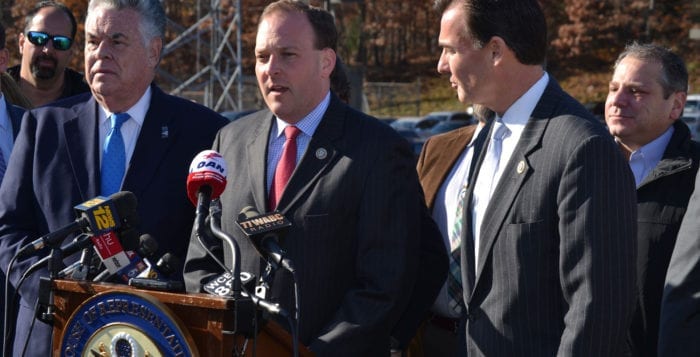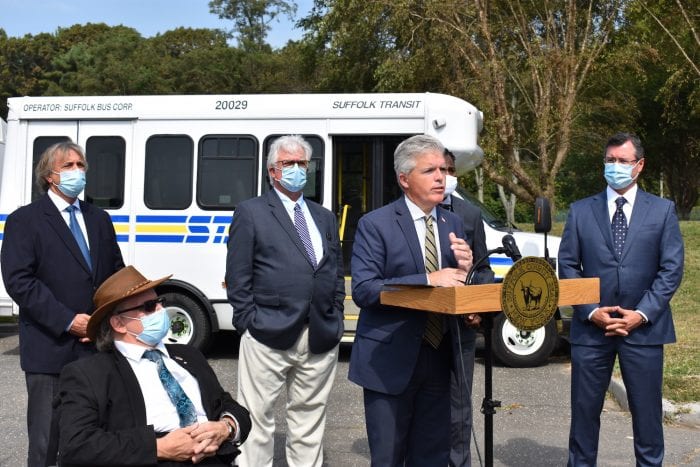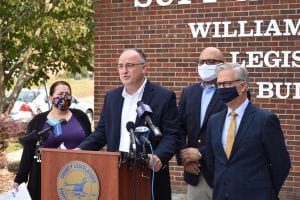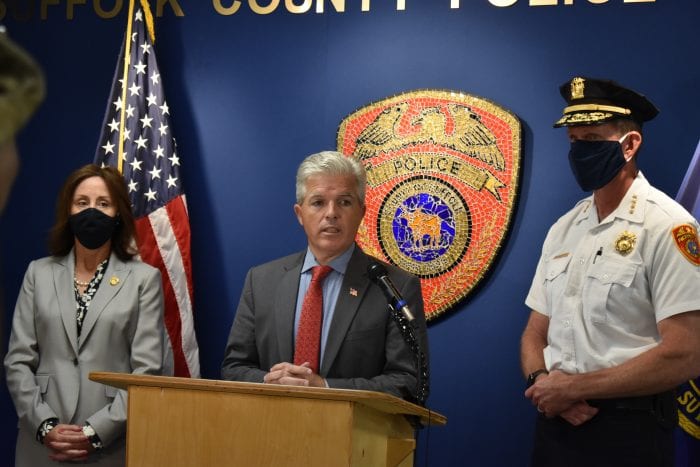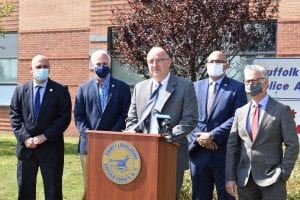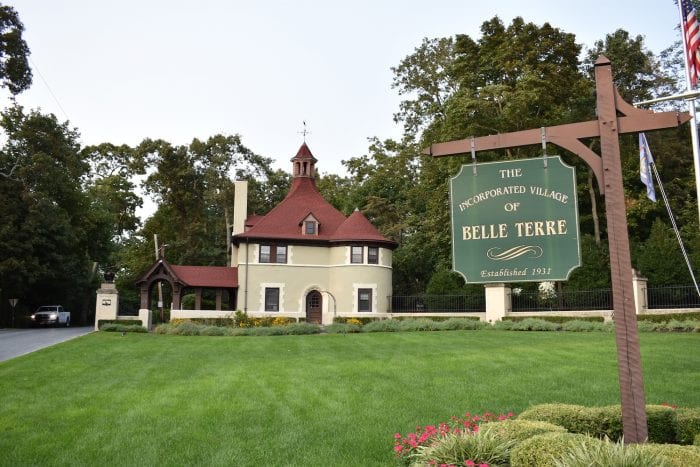After weeks of warnings and missives about an upcoming budget shortfall, Suffolk officials finally published this upcoming year’s budget, one that has to take into consideration an apparent $437 million deficit over the next two years. Cuts won’t be instituted until the middle of 2021.
Suffolk County Executive Steve Bellone (D) revealed a 2021 recommended operating budget of $3.197 billion, representing $33 million less than the current year’s budget. It is a reaction to a total revenue shortfall of $325 million in 2020.
In a proposed budget released Oct. 9, the county would be letting go 500 full-time employees. The county exec said it would also mean a reduction in health care and mental health services, the loss of two full classes of trainees at the police academy and the elimination of 19 bus routes.
Most cuts will be implemented July 1, 2021. County officials said this gives time in case some federal aid is received in the future.
“We have submitted a COVID-19 budget with cuts that would have been unimaginable just a short time ago,” Bellone said on a call with reporters Oct. 13. “These cuts should not happen, these are cuts that are devastating in many ways and would in effect undermine our recovery.”
The budget accounts for a sales tax loss from 2019 to 2020 of an estimated $131.7 million. The anticipated sales tax for 2021 is still $102.5 million less than 2019’s figures.
Among other losses across the board, the one increase seems to be property taxes from a real estate boom on Long Island. Suffolk County received $4 million more than last year, and anticipates $18.6 million more in 2021 than this current year.
In expenditures, contractual expenses and employee benefits are also set to marginally increase.
The county expects a negative fund balance for 2021 of about $176.98 million. Overall, Bellone said Suffolk could be looking at a cumulative $460 million deficit within the next year.
This year’s budget was originally set to roll in back in September, but it has since been delayed until the start of this month. The projected budget also may be another general cry for help to the federal government. Suffolk officials also decry the withholding of state aid to the tune of $1.9 billion to local municipalities.
Cutting employees would save about $25 million next year. The bus route cuts, along with reductions to the Suffolk County Accessible Transportation bus service affecting a total of 2,500 riders of both systems, will save $18 million. The police class cuts will save approximately $20 million, while a 50% cut across the board for contract agencies, which include substance abuse clinics, mental health providers, domestic violence shelters and gang prevention programs, would save another $8 million in 2021 and annualized savings of $16 million.
The budget also shows an overall 1.9% increase in taxes for the police district, though that remains under the New York State tax cap.
Bellone has constantly reiterated Suffolk’s need for federal funds over the past few months, holding press conference after press conference to reiterate loss of services because of COVID-19-induced budget shortfalls. Republicans in the Legislature, however, have consistently attacked the executive for what they have called fiscal mismanagement over the past few years, citing Suffolk’s bond downgrades and a report from Tom DiNapoli (D), the New York State comptroller, saying Suffolk was the most fiscally stressed county in the state in 2019.
Bellone, on the other hand, claimed he inherited in 2012 a $500 million deficit but that the County finished 2019 with a surplus. He added the county would have been on track for $50 million surplus in 2020 that would have wiped out the accumulated deficit prior to the COVID-19 pandemic.
Suffolk did receive $257 million in CARES Act funding in April, as well as an additional $26.6 million for public transportation. Officials have said most or all that funding has been spent or earmarked, and it does not help cover overall losses.

